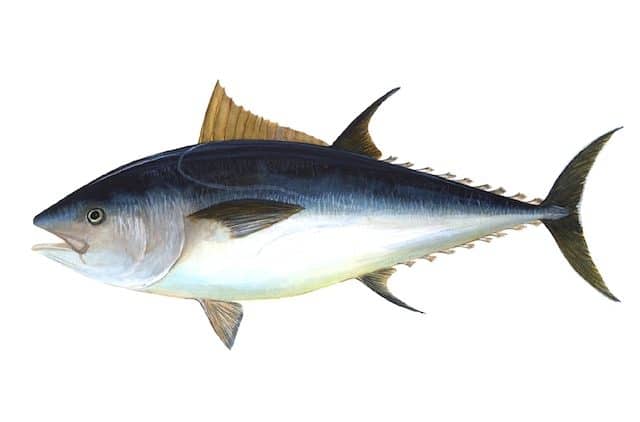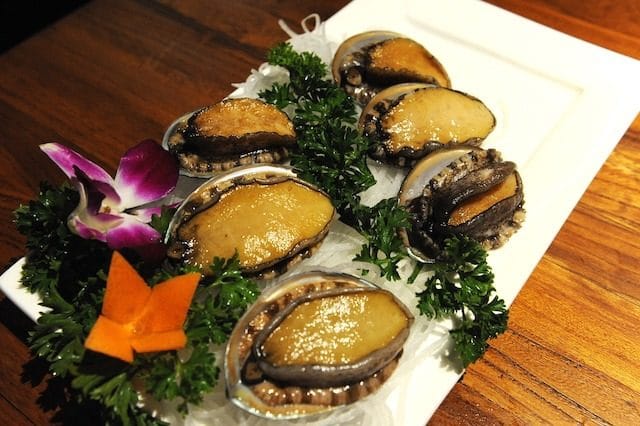A word of warning: You’ll need a great deal of time, luck, or perseverance (or all three) for most of these—and for some a kind of callous disregard for the environment (or the law, or both). But it may be heartening to see that, even with most of the natural world portioned off to the wealthy, there remain plenty of ways to strike it rich in the wild—however unlikely or unethical in practice.
Here are some of the most lucrative.
10. Bluefin tuna

In 2013, a 222-kilogram bluefin tuna was sold at Tokyo’s Tsukiji fish market for 155.4 million yen (roughly $1.8 million at the time, or just over $8,000 per kilo—eight times more expensive than silver). In 2017, the same buyer, Kiyoshi Kimura of the Sushi Zanmai restaurant chain, paid 74.2 million yen ($650,000) for a 212-kilo catch. These purchases both made headlines around the world and that was largely the point; the first auction of the year at Tsukiji always attracts extravagant bids from restaurateurs promoting their businesses. However, it’s not unusual for a single bluefin tuna to go for $10,000-20,000. Although the actual price can be volatile, at just under $37 per kilo, the average 380-kilo fish is worth approximately 14 grand.
Most of it is consumed by the Japanese, who export very little of their own bluefin tuna and import 80% caught worldwide. Yet it wasn’t until the 1970s, after America developed a taste for the fish, that Japan started hungering for its flesh. Before that, it was processed as cat food.
There was was a time, apparently, when American fishing boats could radio in a bluefin catch and expect to find a Japanese man waiting on the dock. After carefully examining the fish, he would write a check there and then, often for $10,000 or more, before loading the catch onto a refrigerated truck to be served up in Tokyo that evening.
Nowadays, with stocks dwindling, it’s not as easy (or desirable) to sell bluefin tuna. According to The Pew Charitable Trusts, it’s fished at up to three times the sustainable rate and its numbers have depleted by as much as 97% from historic (pre-1950) levels. Many countries prohibit catching the fish in bulk, and sometimes even catching it at all—especially the younger specimens. In the US, fishermen are only permitted to sell bluefin tuna with a license, and then only to a licensed dealer.
Still, backdoor sales continue to happen and, with scarcity only likely to drive up the price, they’ll keep happening until the fish is extinct.
9. Elvers
Elver fishermen (or elvermen) typically work alone, at night, and carry weapons to protect themselves on the job—not from the elvers themselves (baby eels up to 120 mm in length), but from rival fishermen who lurk in the darkness to sabotage or steal each other’s catch.
In 2012, following the devastation of Japanese eel farms by tsunami, the price of elvers leapt up to $2,600 per pound. In that year alone, one dirt-poor Maine couple made $300,000 from the fish. On their first night, they recall, they were unsure about whether to accept a wad of $33,000 in cash, feeling as though they’d done something wrong. Nowadays, they may well be.
As of 2017, the value stood at $1,300 per pound, still a healthy return on a relatively easy catch—but elver fishing is more tightly controlled. Elvermen in Maine are now required to have a license, to catch no more than their personal quota, and to register every sale on a state-issued swipe card. Of course, given that it’s easy in some places to drop a net in the water and catch five pounds ($7,000’s worth) in 20 minutes, it’s tempting, to say the least, to break the law.
Elvers are worth far more on the black market too. In the UK, for instance, it’s only legal to sell the fish within the EU—at a mere £75 ($96) or so per pound—and there are limits and regulations to navigate. But illicit sales to Asia can fetch something like £2,000 ($2,569) per pound—as long as the fish are alive.
Actually getting them out of the country may pose a problem, though; some poachers catch hundreds of pounds in a night. One man was caught trying to smuggle 440 pounds of live endangered baby glass eels through London’s Heathrow airport in 2017, having already smuggled them from Spain. They were apparently bound for Hong Kong, where they might have sold for $1.5 million. Instead, they were returned to their habitat.
8. Abalones

The abalone, a kind of marine snail, is one of the most lucrative sea creatures in the world—prized in East Asian countries as a Chinese New Year delicacy. Demand is so high, in fact, that Chinese criminal syndicates are known to exchange illegal imports of the mollusk for high-value drugs like crystal meth. Unfortunately, this demand has also seen their numbers dwindle, in turn placing kelp forest ecosystems at risk.
In the US and elsewhere, abalone fishing is tightly controlled or even banned, making it illegal to profit from their sale without a license. But a black market continues to thrive. Poachers regularly risk their lives for the prize, sinking below the waves in wetsuits and weighted belts and often meeting their ends in underwater caves, rough seas, or the jaws of great white sharks.
The largest and most valuable species is the red abalone of North America, found right down the West Coast from British Columbia in Canada to Baja California in Mexico. Full-sized specimens can be worth $100 each, and an estimated 250,000 ($25 million’s worth) are caught in California alone every year. Dried abalone—reputed to be an aphrodisiac—can sell for more than $2,000 per pound, while iridescent abalone pearls (horn- or tooth-shaped gems) are valued at roughly that much per carat and some weigh more than 500 carats each.
Divers are understandably secretive about their favorite locations, but they also need to be wary of cops. One illicit exchange in San Francisco—45 abalones for $2,500—was intercepted by a wildlife protection SWAT team. And in Mendocino County, a couple of sea urchin divers were banned from fishing for life, fined $60,000, and jailed for two years for carrying 458 abalones (maybe $40,000’s worth) on their boat. As the arresting game warden admitted, the lure can be all too tempting to resist: “Sea urchins are nickels, but next to those nickels are $100 gold pieces. And it’s very tempting for those guys to grab a couple. And then it grows from there.”
Ironically, confiscated abalones—one of the most luxurious and expensive seafoods around—are often donated to local soup kitchens to feed the homeless.
7. Saffron

Saffron has been used for thousands of years as a medicine and an aphrodisiac, as well as, of course, in cooking. It was also traditionally used to dye the saffron-orange robes of Buddhist monks.
Unlike every other item on this list, it isn’t actually found in the wild—but you might want to start growing your own. Depending on the quality and season, it can sell for as much as $5,000 per pound. It’s not easy, though. In fact, saffron is one of the most land and labor-intensive crops you could choose. One pound of it (in dry weight) amounts to roughly 210,000 individual crocus stigmas—the spindly filaments that grow from each flower. Since each saffron crocus yields only three of these, you’d need 70,000 flowers and about as much space as a football field just to make $5,000 or less. Compounding the difficulty, each stigma must be plucked by hand, in the morning, to minimize damage, and the plant only flowers for a couple of weeks in the fall (as long as the weather is good).
In other words, the price tag should be seen not so much as an enticement to grow but as a sign of the hardships involved. Although saffron is common in Spanish cuisine, for example, the country has largely turned away from growing it domestically because it just isn’t economically viable.
That said, given plenty of unused land (whether it’s technically yours or not), growing and harvesting saffron could make for a lucrative hobby.
6. White truffles
In 2016, a 4.16-pound white truffle sold at Sotheby’s for $61,250 to a phone bidder in China. This was apparently the world’s largest, but it was far from the most expensive; truffle prices depend on the season, and that was part of a bumper crop. In 2007, a much lighter, 3.3-pound specimen went for $330,000. In both cases the proceeds went to charity, but there’s a darker side to the white truffle trade.
In 2007, three men disguised as police officers pulled over a truffle hunter in Italy and, under the pretext of looking for drugs, made off with thousands of dollars worth of the fungi. The trade is also associated with tax evasion, counterfeits, and even killings. In 2010, a French farmer shot and killed a man he suspected of poaching truffles from his land, and some of the best-trained truffle-sniffing dogs have been targeted by rival hunters with strategically placed poisoned meatballs. Truffle hunters tend to be fiercely protective of the locations they hunt in. Some even keep them secret from their own families, right up until the day that they die.
The extraordinary value of white truffles basically comes down to their scarcity. Generation after generation has attempted to cultivate the fungus, but they still only thrive in the wild. The costs involved in finding them are also taken into account; lone truffle hunters are only able to find a small amount so the biggest suppliers employ a network of thousands, all of whom need to be paid. Then there are the costs of preserving the truffles in transit, of keeping them from losing their moisture, and especially their aroma, which peaks and declines in a week. Of course, some people just like them because they’re worth so much.
You’ll need a specially trained dog if you want to start finding your own. Pigs, though traditionally used, tend to eat what they find. The best places to look are in Piedmont, Italy, in the countryside around Asti and Alba—but good luck competing with the locals.
5. Ambergris
https://www.youtube.com/watch?v=J8bh9TDw-Yk
In September 2015, a lump of whale poop (or puke; it’s hard to be sure) found in Wales sold for £11,000, or more than $16,500. In April the following year, a couple in northern England found another lump worth $70,000+. Then in January 2018, a “hard-up” musician walking along a beach in southwest England found some worth £200,000 ($280,240).
And it’s not just in the UK. In 2016, fishermen off the coast of Oman hauled aboard a massive, 80-kilogram hunk of it—one of them having spent years looking for the stuff—and were offered 13,500 Omani rials per kilo, or 1 million rials ($2.8 million) for the lot.
Ambergris is an exceptionally rare substance excreted, from either end, by sperm whales. It smells like a pungent “cross between squid and farmyard manure,” which is essentially what it is: A mixture of undigested squid beaks and various digestive products, most notably including ambrein—a kind of glue for the beaks, holding them together and allowing them to pass through whales’ intestines without causing injury. Once out of the body, lumps of ambergris float on the ocean for years, gradually lightening in color and taking on the scents of the sea. The substance is prized by fragrance chemists, of all people, for its unique fixative properties, as well as its reputation as an aphrodisiac. And while synthetic alternatives have increasingly come to replace true ambergris in the industry, there’s still a lucrative market for the real stuff.
According to perfumer Günther Ohloff, the scent is unmistakable: “…earthy, fecal, marine, algoid [like algae], tobacco-like, sandalwood-like, sweet, animal, musky and radiant.” Lesser trained noses might want to consult an expert, though; paraffin wax, palm oil waste, and even sewer grease can smell perfumey at a stretch—especially when you think you’ve found a fortune.
4. Gold

Panning for gold might seem a thing of the past, but some people still get lucky. As recently as July 2018, a goldseeker in Scotland found a 2.75 Troy ounce nugget worth at least £50,000. He spotted it underwater while lying face down in a stream with a snorkel—a technique known as ‘sniping’.
Admittedly, most goldseekers only find tiny flecks of the metal in rivers because it takes raging floods to shift anything heavier. And, depending on where you live, there may be other obstacles too. In the UK, at least, where all gold belongs to the Queen, goldseekers need permission from both the Crown and the owner of the land to keep anything they happen to find.
Most gold is deep underground anyway, and practically impossible for amateurs to mine. But there are exceptions. In 2016, an Australian man with a metal detector unearthed a 145-ounce gold nugget expected to sell for $190,000. The year before, another Australian found an 87-ounce nugget that went for $133,000 at auction.
To be in with a chance of following suit, you’ll need to buy a specialist detector—and even then you’ll be relying on luck. Research helps, though. According to the experts, you could spend a lifetime scouring old gold-mining regions and never find so much as a fleck, purely because even specialist gold metal detectors are unable to pick up the fine grain “flour gold” that some mines were exclusively built for.
3. Meteorites

In the remote desert town of Erfoud, Morocco, impoverished Berber nomads make a living selling rocks from outer space. And they’re not alone. Meteorite hunters around the world, like the American Michael Farmer, who once sold a 120-pound meteorite for $600,000, make enough for a comfortable early retirement. But he enjoys the thrill of his job far too much to quit. Having traveled the world in pursuit of space rocks, he’s got plenty of stories to tell. In 2011, for instance, he was kidnapped and beaten—almost killed—by Kenyan thieves and imprisoned for two months in Oman on illegal mining charges.
Perhaps more than any other item on this list, it’s easy to see the appeal of meteorites—many of which are older than Earth. As Farmer puts it, “you can hold something in your hand that, just a week before, was well on the other side of the moon …. It’s like holding a piece of history, but much older than anything we can imagine on this planet.”
And when it comes to actual chunks of other planets, which make up 0.1% of all meteorites, the appeal becomes even more obvious—hence their extraordinary value. Just 100 grams of Mars rock, enough to fit in the palm of your hand, can sell for $100,000. And in 2012, a 4-pound lump of the Moon sold for $330,000. Meteorites with a story attached, like falling through somebody’s roof, also command high prices.
Some, however, are so common as to be practically worthless—at least in terms of profit. Chondrites are worth less than $25 and you can find pebble-sized tektites on eBay for under $5.
It’s not easy finding the ones worth big money. Seasoned meteorite hunters tend to be cagey about their methods (such as plotting out landing zones based on radar images and calculations), but even they can misidentify Earth rocks as meteorites. (They call these “meteorwrongs.”)
The key, apparently, is persistence—and knowing exactly what to look for. Fresh landings have black fusion crusts, while older rocks are rusted reddish-brown. Meteorites also have regmaglypt “thumbprint” indentations, a result of material shearing off in the upper atmosphere. They also tend to weigh up to 3.5 times the weight of Earth rocks, owing to their relative density, and many are magnetic as well. It’s also worth knowing that meteorites are rarer in some states (and countries) than others. As of 2013, the Meteoritical Society claimed that none had ever fallen on Delaware, New Hampshire, Rhode Island, or Vermont. This doesn’t mean they don’t, of course, but any that do could be worth a fortune to the right collector.
2. Dinosaur fossils

Paleontological sites of interest tend to be heavily protected. In Alberta, Canada, for example, it’s only legal to remove dinosaur bones from private land (with permission from the owner), and only then if they’re sitting on the surface; you’re not allowed to dig for them. And you’re certainly not allowed to sell them.
In the US, however, only public land is protected. So, while the Hell Creek Formation—a region of Montana, Wyoming, and North and South Dakota teeming with fossils—is mostly owned by the government, ranchers pose a problem for paleontologists. One Montana couple famously came across the paleontological find of a lifetime in 2006 when they found a Nanotyrannus lancensis (or “pygmy T. rex”) locked in battle with a Chasmosaurine ceratopsian (a relative of Triceratops). The fossils were unique, but the finders (and therefore keepers) set the price far too high for museums and academics to afford—an expected $7-9 million at auction, with private bids starting at $15 million. In the end, they only received one bid—for $5.5 million—and they declined it for being too low.
The “dinosaur fossil bubble,” which began in 1997 with the sale of a T. rex for an unprecedented $8.4 million, appears to have burst. In 2016, a nearly complete Stegosaurus skeleton failed to attract any bids whatsoever, despite being valued at $2.7 million.
Still, dinosaur bones remain a lucrative wild find, as long as they’re legitimately sourced—or as long as nobody finds out that they weren’t. Some other notable finds include a Tyrannosaurus bataar skull sold to Nicolas Cage for $276,000 (and returned to Mongolia when it turned out to be theirs); a Stygimoloch skull, complete with horns, sold for $100,000 in 2003; and a remarkably well-preserved, 65-million-year-old Triceratops skull valued at $1.8 million+.
1. Diamond

With the diamond industry so rife with corruption and caught in a corporate stranglehold, it can seem impossible to make a fortune from the gems—especially as an amateur with next to no capital or tools.
But at the Crater of Diamonds State Park in Arkansas, visitors aren’t just permitted to dig around for diamonds, they’re actively encouraged to keep them. They even provide tools and instructions, and, while it’s rare to find anything worth selling, people do find gems worth big bucks. One visitor made headlines in 2015, for example, when she found an 8.52-carat diamond worth $1 million. Dubbed the Esperanza Diamond, it’s thought to be the most valuable ever found in the US. Other notable finds in the region include the 15.33-carat Star of Arkansas, the 16.37-carat Amarillo Starlight, and the 40.23-carat Uncle Sam.
There are other places to look for diamonds, of course, but unlicensed finds are harder to sell. In 2017, for instance, a pastor in Sierra Leone found a 706-carat diamond and sold it for $6.5 million at auction in New York; however, because his mining license was still being processed at the time, the so-called Peace Diamond wasn’t his to sell in the first place and he only got 40% of the proceeds.